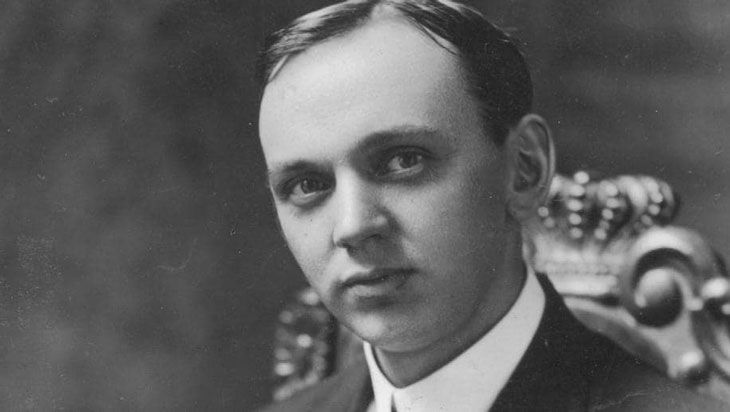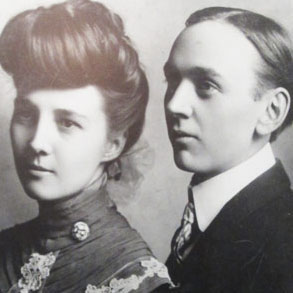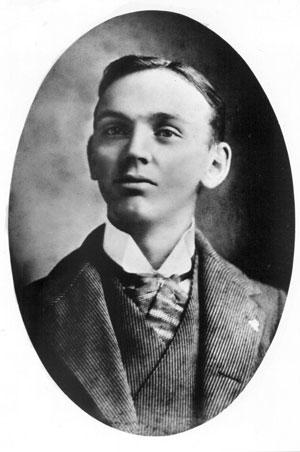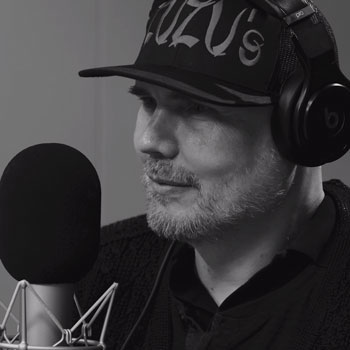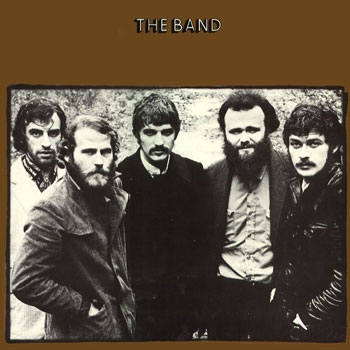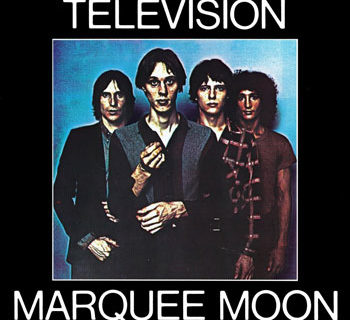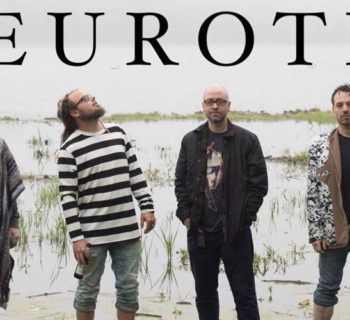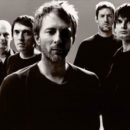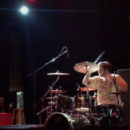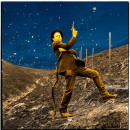On an unassuming stretch of Virginia Beach’s Atlantic Avenue, just half a block from shores with sand crystals said to contain curative properties, sits a large, brutalist structure more reminiscent of an outdated medical office than the charming beach bungalows and suburban cottages that line most of the neighborhood. But the Edgar Cayce Association for Research and Enlightenment (A.R.E.) is more interested in inner wellness than superficial beauty. Their purpose? Psychic healing of mind, body, and soul.
Indeed, the interior of the building feels nothing like its bleak exterior. Instead of operating rooms, you’ll find a holistic health center and spa, and instead of waiting rooms, a meditation garden. Rather than pamphlets on how to maintain heart health, there are blog posts on how to bring meaning to your life, create peace on earth, and deal with fear. As of late, you'll even find a recording studio.
Earlier this year, psychedelic, stoner-rock group Mountainwolf, composers of songs like “Wine X Weed,” “LSD,” and “Sex Messiah,” chose the A.R.E. as the place to record their sophomore album Absinthe Moon. According to the band, the A.R.E. is “the deepest place of truth that we can psychically and mentally connect to, some say a vortex point”.
The reason for the center’s unique energy is this: it was founded by Edgar Cayce, arguably the world’s most prolific American psychic, who is credited with bringing European mysticism to the United States and planting the seeds for what eventually became the New Age movement of the 1970s.
As a child, Cayce claimed he could absorb information from books by sleeping on them. In his teens, he would put himself into a trance and diagnose people who had fallen ill with impressive accuracy, earning him the nickname, “The Sleeping Prophet.” According to biographer Sidney Kirkpatrick, Cayce saw clients as illustrious as Woodrow Wilson, Thomas Edison, Irving Berlin, George Gershwin, and Marilyn Monroe. A deeply religious man who saw his readings as a gift from God, he never accepted money for them and refused to go into business with a number of medical doctors who proposed a partnership with him.
In 1931, an angel appeared to Edgar Cayce and convinced him to move his family to Virginia Beach. He went there to promote healing and start the Association for Research and Enlightenment, eventually winning the nickname “the miracle man of Virginia Beach.” After moving there, Cayce’s readings began to drift further from traditional Christianity toward esoteric concepts such as reincarnation, astrology, seeing auras, astral projection, and prophesizing. It was these metaphysical intrigues that would ultimately bleed into the culture of the 1960s and 70s, making him the “father of the New Age movement”
The deepest place of truth that we can psychically and mentally connect to, some say a vortex point.
If it seems odd that a group of hallucinogen-inspired doom metal rockers with jam band flair would choose Cayce as a major source of inspiration, it’s worth remembering that much of music’s purpose throughout history has been to inspire a trance-like state in listeners. Even today, there’s an entire subgenre of electronic music called “Trance” while jam bands—jazz, rock, or other—make becoming “one” with the music a central goal.
Mountainwolf, whose trippy, Sponge Bob-like mascot has a third eye, certainly falls within this vein. Nearly every song on Absinthe Moon is a 6–7 minute long meditation that transports the listener into an otherworldly, hypnotic state. Their songs feature a myriad of relevant and diverse influences. “Krishna,” named after a major deity of Hinduism, calls up melodies reminiscent of classical Indian music. The opening track “TWST” evokes the dark, slow dread of doom metal, a genre that sprouted in the 1980s from influences like occult heavy metal band Black Sabbath. Old-school psychedelic rock, laced with heavy LSD, comes to the fore in “Black Lung,” which spins out into a Jimi Hendrix-like riff about halfway through.
Indeed, Hendrix himself embraced mysticism, too, as depicted in the cover of the album Axis: Bold as Love, which features the band as various forms of the Hindu deity Vishnu. This followed just a few months after the Beatles released Sgt. Pepper’s Lonely Hearts Club Band, which contained its own sitar-laden ode to transcendence, “Within You Without You.” The band even traveled to India (along with Donovan, The Beach Boys’ Mike Love, and jazz flautist Paul Horn) to study with the Maharishi Mahesh Yogi. It’s probably no surprise that transcendental meditation began to take hold in the United States and UK at this time.
When the New Age movement of the ‘70s was replaced by the “greed is good” philosophy of the ‘80s, rave culture took hold and latched on to some of the same mystic principles. “Trance” was established as a subgenre of electronic music and rave staple that uses repetitive rhythms and hypnotic sounds to lull club-goers into a trance-like state.
It was these meditative concepts that inspired Mountainwolf to record at the Virginia Beach center where Cayce’s readings took place. In an interview with the A.R.E. Headquarters, they said that the famed Sleeping Prophet has influenced and inspired them by acting as “a vessel and a channel for a lot of healing” and teaching that “all people are much more than we can ever imagine.”
If it makes the audience dance harder, all the better. Indeed, movement has also been used as a vehicle for achieving mystical enlightenment since ancient times. Coupled with music, it can induce trance-like states that relax and numb our waking minds and allow the “divine” to take the reins. Drawing on the whirling of Sufi dervishes, a sect of Deadheads, fans of pioneering jam band Grateful Dead, even created their very own church, known as the “Church of Unlimited Devotion” with its members called “Spinners.” They believed that Jerry Garcia could actually channel God with his guitar during jam sessions and spun to receive and channel it. Nor was Garcia the first musician to achieve religious status. Jazz pioneer John Coltrane was believed to channel divine inspiration during his improvisation to such an extent that an African Orthodox church in San Francisco made him their patron saint.
If you sift through the teachings of the A.R.E., you’ll find that Cayce’s loyal followers are almost exclusively interested in his later, more esoteric readings rather than his strictly medical readings. The readings cover ancient mysteries, astrology, dreams, holistic health, life’s purpose, meditation, reincarnation, oneness, and spiritual growth. In other words, what moved people in a lasting way was not the fact that Cayce could diagnose and cure their ills, but that he could connect them with the divine.
That’s exactly the goal of Mountainwolf. Like Cayce, they believe transcendence does not have to be mysterious and other-worldly; it’s something that we can all experience, here and now, by transcending the individual, the personal, and creating a connection with a greater, universal whole. The music is merely the usher, but a rockin’ one.

